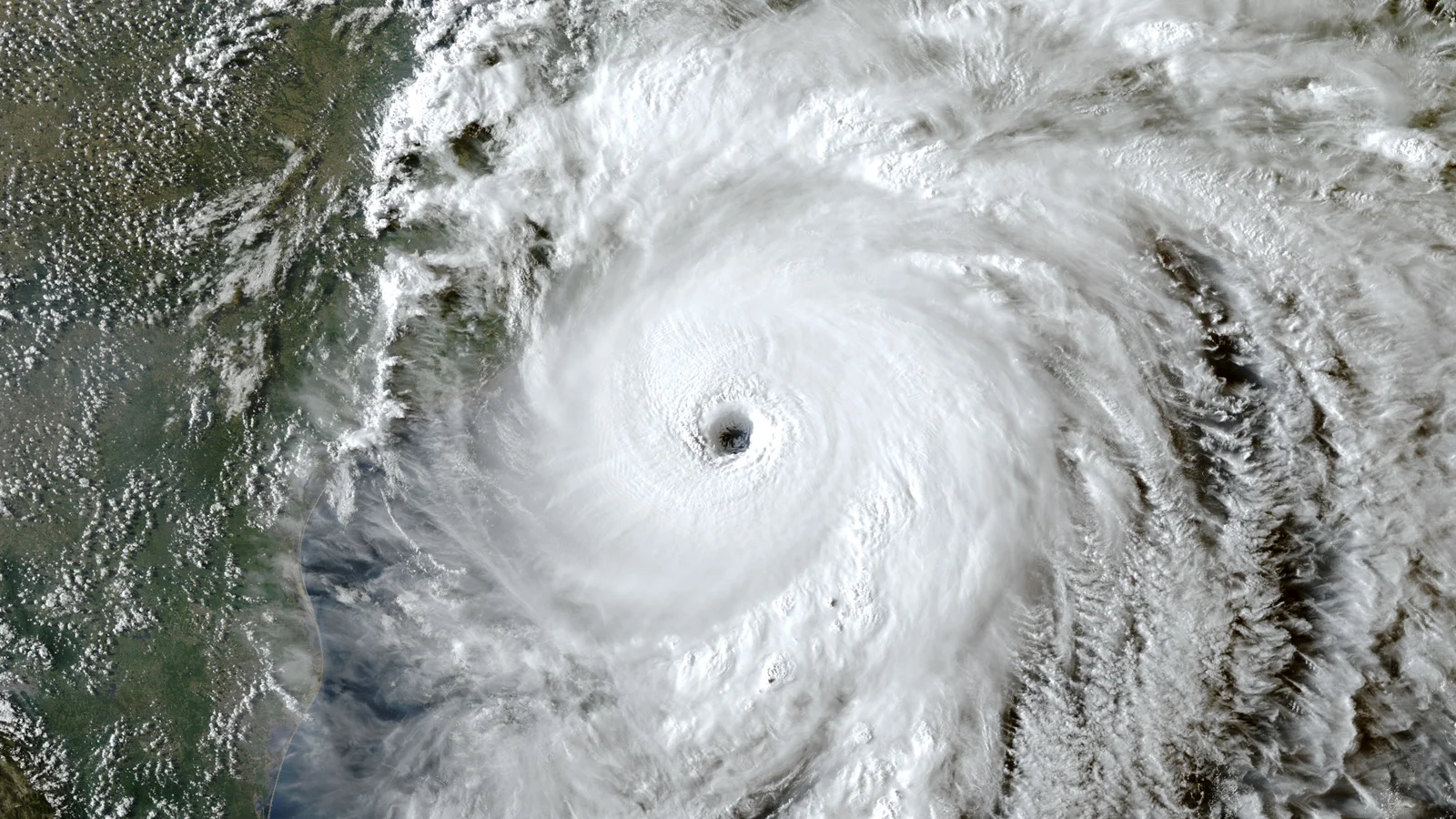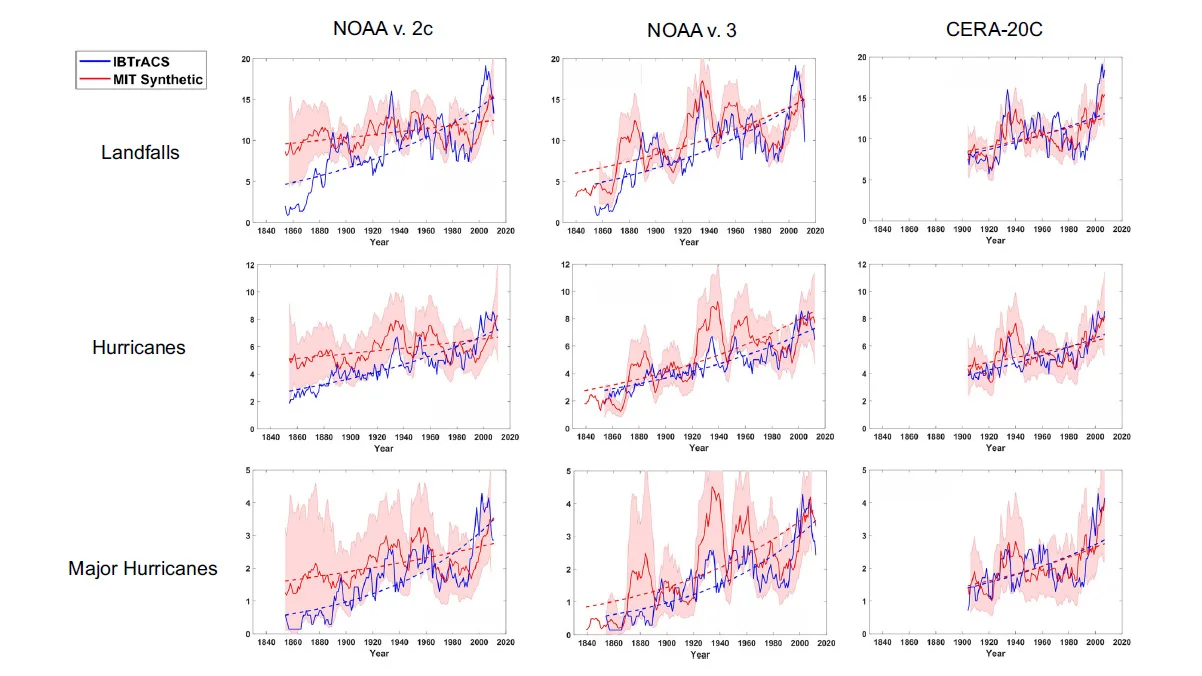
Hurricanes in the North Atlantic are increasing in frequency, says study
As global temperatures rise, local climate impacts to the Atlantic basin appear to be driving an increase in hurricane activity.
New research confirms what historical records have been telling us — that hurricane activity in the North Atlantic has been increasing over the past 150 years.
Today, with the array of satellites we have in space, no hurricane, typhoon, or tropical cyclone escapes our attention. Detailed imagery from orbit, along with data collected via ocean buoys, ships, ground stations, and aircraft reconnaissance, give scientists unparalleled insights into the frequency and strength of these storms.
However, going through the full historical record of hurricanes, researchers point out a noticeable trend.
"As you go back in time, the observations become more and more sparse," Dr. Kerry Emanuel, a meteorologist and climate scientist at the Massachusetts Institute of Technology, explained to Reuters.
Regular observations of hurricanes via satellite began in the 1970s, and since the 1940s aircraft have been making dedicated reconnaissance flights into storms. Unfortunately, prior to that, records only came from ships, or from islands that the storms passed over. So, for roughly the first century of the historical record, collecting data on hurricanes essentially depended on luck.
Therefore, a storm that did not cross any of the established shipping lanes of the time, or that followed a track which avoided all islands, would not show up in the historical record.
"Undoubtedly, we missed some storms," Emanuel concluded.
Now, Emanuel is the author of a new study published in Nature Communications, in which he used climate simulations to reconstruct hurricane activity over the past 150 years.

2020's Hurricane Laura reached its peak intensity off the US East Coast on August 26, as seen here in imagery from the GOES-16 geostationary weather satellite. Credit: NOAA
Looking at the full record from 1851 to the present day, there is a noticeable uptick in the frequency of hurricanes in the North Atlantic Ocean. With the apparent sparsity in the first century of the record, though, climate researchers have avoided using this trend when trying to determine the impact of global warming on hurricane activity.
"Nobody disagrees that that's what the historical record shows," Emanuel stated in an MIT press release. "On the other hand, most sensible people don't really trust the historical record that far back in time."
There have been attempts to fill the gaps in the earliest parts of the record, of course.
Studies have compared modern storm tracks to old shipping routes, to see if there were ones that would have been missed in those early years. While these studies did suggest that hurricane activity may not have increased, Emanuel considered there to be two key issues with this approach. Firstly, there's no telling if hurricanes back in the late 1800s and early 1900s would have followed the same tracks that they do in modern times. Indeed, recent research has found that Atlantic hurricanes are reaching their peak strength farther north, so there may be significant differences in their tracks, today, compared with 100 to 150 years ago. Secondly, some of the oldest shipping routes are still not yet digitized into the record. If those routes were added to the studies, their conclusions may have changed.
So, instead of relying on the historical records, Emanuel chose to instead reconstruct the past using climate simulations. This method — known as 'reanalysis' — is when real data is fed into a climate model to simulate the past, rather than the future. This has been very successful, in general, because model results can be directly compared to the weather conditions that actually occurred.
For this study, in particular, Emanuel left out aircraft and satellite data, and only fed surface observations from ships and islands into his reanalysis models. This kept the type of records consistent and gave an accurate account of the weather and sea surface conditions for the full span of the historical data. Into those models he then scattered hurricane 'seeds' — the basic conditions that can cause a hurricane to form — and watched what happened.
Across the three climate simulations that he used, they all revealed the same thing. While there was no noticeable increase in hurricane activity on the global scale over the past 150 years, there was a definite increase in activity specifically for hurricanes in the North Atlantic.
The overall number of hurricanes increased over time, the number of major hurricanes increased, and the number of landfalls also went up.

These graphs show the results from all three models used in the study. Each graph contains the actual historical hurricane records from the International Best Track Archive for Climate Stewardship (IBTrACS) database (blue line), which produce a positive trend (blue dashed line). The red line in each represents the results from Emanual's MIT study, which also reveal a positive trend (red dashed line) for hurricanes, for major hurricanes, and for hurricane landfalls. Credit: Emanuel, 2021/Nature Communications
As shown in the graphs above, the simulations did "find" a significant number of missed North Atlantic hurricanes, with some of those likely becoming major hurricanes. The models also accurately reproduced a noticeable 'peak' in hurricane activity seen in the 1940s, and the 'hurricane drought' that was experienced in the 1970s and 1980s. Emanuel's research group attributes this drought to the cooling effects of sulfate aerosols from fossil fuel burning. The presence of these sulfate aerosols in the atmosphere would have meant more sunlight being reflected back into space, thus cooling the surface and limiting the impacts of global warming. As regulations were put into place to limit sulfur dioxide emissions (due to the public health risk they posed), this cooling effect was removed.
"The general trend over the last 150 years was increasing storm activity, interrupted by this hurricane drought," Emanuel stated in the MIT press release.
Given that these simulations showed no overall increase in the global trend of tropical cyclone activity, it is difficult to make broad assumptions about the cause of the specific uptick in activity in the North Atlantic.
From the study, Emanuel stated that "most of the variability of North Atlantic tropical cyclone activity over the last century was directly related to regional rather than global climate change."
Thus, rather than being driven by the overall impacts of global warming, it may be the smaller scale impacts — changes in North Atlantic sea surface temperatures, and changes in the strength and position of ocean currents — that are driving this increased activity.
"That is still a mystery," Emanuel noted, "and it bears on the question of how global warming might affect future Atlantic hurricanes."

